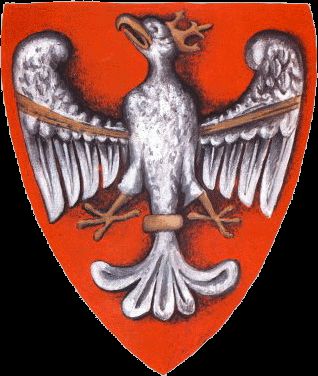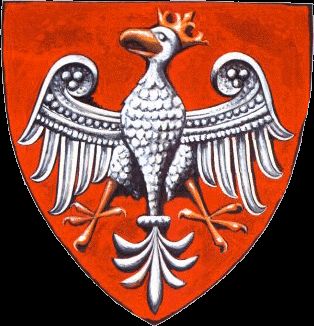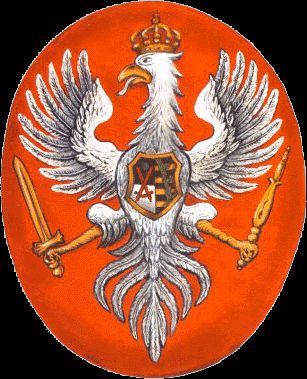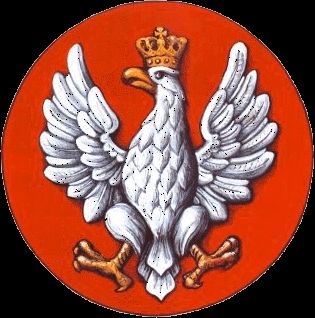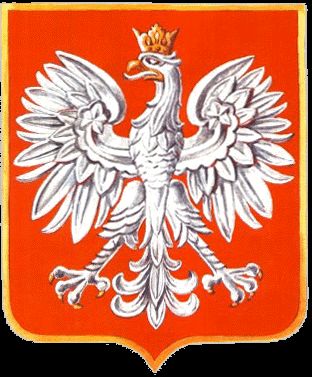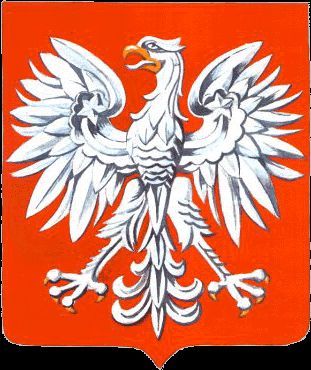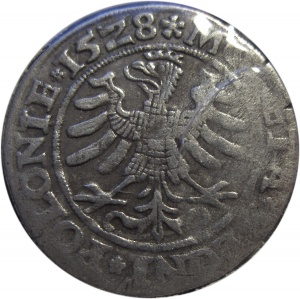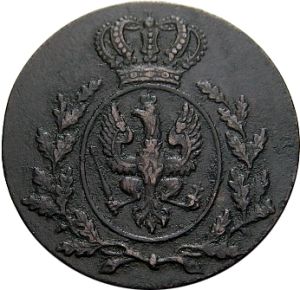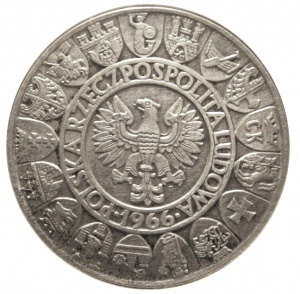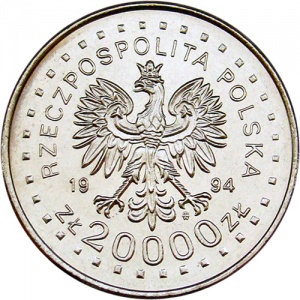National Arms of Poland
NATIONAL ARMS OF POLAND
Official blazon
Origin/meaning
An old legend says that Poland was founded by Lech, brother of Czech and Rus - founders of Poland's southern and eastern neighbors. He settled in the place where he spotted a majestic white eagle in its nest. Hence the name of Poland's first capital city - Gniezno ("nest"), and the White Eagle in the Polish arms (which also appears in the Gniezno arms).
True or not, the White Eagle has been used by all rulers of the house of Piast dynasty - Poland's first ruling dynasty (10th - 14th centuries). Eagles appeared on seals, coins and standards. The first true Polish king, Przemysl I, made the White Eagle in a red field the Polish arms.
The design evolved over the centuries. In the 14th century a three-leaf pattern was added to the Eagle's wings, as we can see on King Kazimierz the Great's arms, see below.
| The arms as used in the 12th century |
The arms as used in the 14th century |
In the 16th century the eagle became more ornamented. The shield also changed its shape from medieval to renaissance. Kings started to add their initials, as did Sigismung August (SA) for instance, see image below.
| The arms as used by King Sigismund August |
With the end of the Jagiellonian dynasty in the end of the 16th century kings were chosen by the nobility from among either foreign rulers or Polish aristocrats. Each newly elected king would add his family arms as an escutcheon to the eagle.
In the 17th century the shield had become oval and the insignia had been changed as well: the open crown, which used to show the allegiance to the German emperor, was replaced by a closed one to show that the Polish-Lithuanian Commonwealth was a sovereign power of its own. A sword and a baton were also added.
| The arms as used by the Wettinger dynasty in the 18th century with the arms of Sachsen |
In the 18th century the Kingdom of Poland was divided by Russia, Prussia and Austria and the eagle thus disappeared. Poland re-emerged as an independent republic only after the First World War in 1918. In 1919 the parliament adopted the white eagle again as a national symbol, but without the escutcheon, sword or baton.
The design was changed by the President's decree in 1927. It gave the White Eagle a more modern look. It had again an open golden crown, a golden beak and golden claws. The traditional three-leaf pattern on the Eagle's wide-open wings was changed to five-pointed stars. The red shield became rectangular and was given a gilded edge.
| The arms as used after 1918 |
The arms from 1927-1945 |
After the Second World War the Communists removed the crown and in 1955 they removed the gilded edge.
| The arms as used from 1955-1989 |
After the fall of Communism in 1989 the crown was restored. The five-pointed stars were also associated with Communism so two points in each star were shortened in order to make the stars look more like the three-leaf, which results in the present arms (top image).
Use on coins
| The arms on a coin from 1528 |
The arms on a coin from 1816 |
The arms on a coin from 1966 |
| The arms on a coin from 1994 |
Contact and Support
Partners:
Your logo here ?
Contact us
© since 1995, Heraldry of the World, Ralf Hartemink 
Index of the site
Literature : Background and images by Karol Palion.

